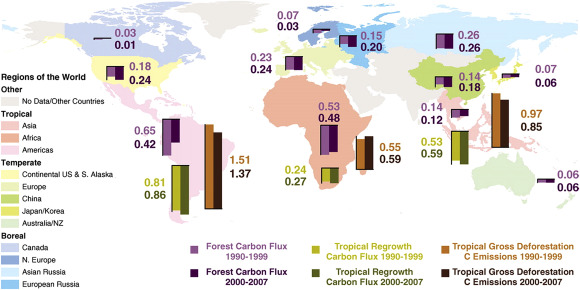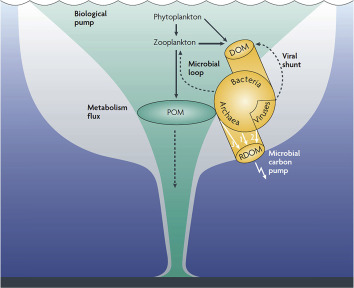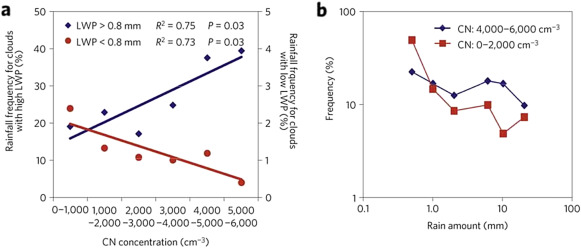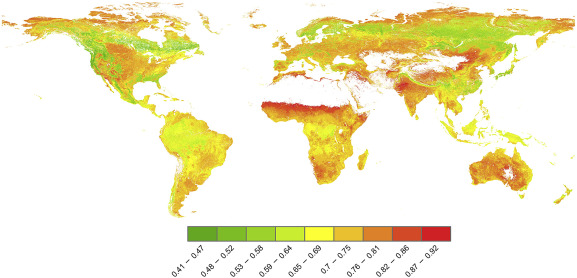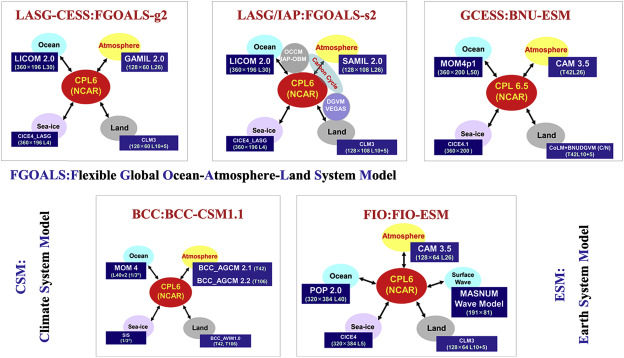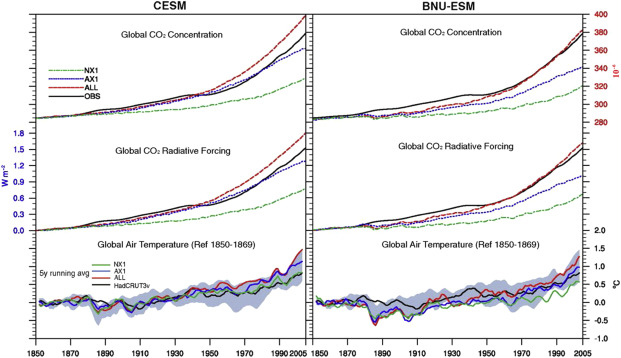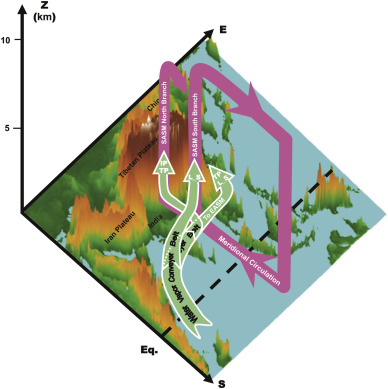Abstract
Here we review the activities and recent accomplishments resulting from the global change and Future Earth initiative studies in China. As a new international research initiative, Future Earth will develop comprehensive knowledge for responding to global change risks and create transformative opportunities toward future global sustainability. The Chinese National Committee for Future Earth, the consultation project Develop ‘Future Earth in China’ for Promoting Social Sustainability and the cooperative international project Co-design of Implementation Plan for Future Earth in China were developed to help foster a culture of sustainability and conservation in China. To help promote the sustainability movement in China, Chinese scientists from both the natural and social sciences, policymakers, and stakeholders are encouraged to join the future activities following the Future Earth model co-design, co-produce, and co-delivery.
Keywords
Global change ; Future Earth ; Sustainable development
1. Introduction
Since the 1980s, global climate change studies in China have rapidly grown with the support of the National Natural Science Foundation of China (NSFC), Chinese Academy of Sciences (CAS), and universities. In July 2010, the Ministry of Science and Technology (MOST) of China launched a National Key Basic Research Program on Global Change. In September 23–25, 2013, MOST organized the first Beijing Symposium on Global Change entitled Global Change and Sustainable Development. The purpose of the Symposium was as follows:
- to present research results to the international community;
- to get advice from world-renowned scientists;
- to further implement the program; and
- to contribute more to the frontier of international research.
In 2013, a new 10-year international program, Future Earth (FE), was launched to succeed the Global Environment Change (GEC) study. FE is sponsored by the Science and Technology Alliance for Global Sustainability, which consists of the International Council for Science (ICSU), the International Social Science Council (ISSC), the Belmont Forum of funding agencies, the United Nations Educational, Scientific, and Cultural Organization (UNESCO), the United Nations Environment Programme (UNEP), and the United Nations University (UNU), with the World Meteorological Organization (WMO) as an observer.1 FE is an international research program that encourages scientists to cooperate with policymakers, organizations, the public, and other stakeholders to provide options and solutions for the development of global sustainability.
In recognizing that the transition from global change research to FE is an inspiring as well as complex and difficult task, the China Association for Science and Technology (CAST), an ICSU national member in China, hosted an International Workshop called Future Earth in China in Beijing on September 26–27, 2013. Its objectives were as follows:
- to get the Chinese GEC community involved in FE activities;
- to identify national priorities in the context of sustainability research;
- to recognize the challenges of transdisciplinary research in China; and
- to move forward in co-designing, co-producing, and co-delivering on a GEC study with related stakeholders.
Experts from ICSU and many other countries attended the workshop to brainstorm co-designed pathways for the development of Chinas sustainability. After the workshop, Chinese Academy of Sciences initiated a cooperative international project, referred to as Co-design of Implementation Plan for Future Earth in China. The Chinese National Committee for Future Earth (CNC-FE) was also established, which is jointly supported by CAST, CAS, the Chinese Academy of Engineering (CAE), the Chinese Academy of Social Sciences (CASS), NSFC, and others. A consultation project on Develop Future Earth in China for Promoting Social Sustainability was also approved by the CAS Academician Division (CASAD). This review briefly introduces the progress that was made in China during the transition from GEC to FE studies, including key near-term issues related to the FE study, as identified by CNC-FE, and the ongoing efforts to unite natural and social scientists, public, media, funding agencies, and policymakers toward a sustainable development goal (SDG). In Section 2 , after introducing the GEC science activities in the U.S. and Europe, the progress on GEC study in China is reviewed. Section 3 briefly describes the initiation of the Future Earth study in China and the setup of the CASAD consultation project Carry on Future Earth Study, Promote Sustainability in China. The introduction of the CAS international cooperation project Co-design of Implementation Plan for Future Earth in China is given in Section 4 . Section 5 provides a concluding remark.
2. Global change
Global change refers to planetary-scale changes to the Earths system, including changes in atmospheric circulation, ocean circulation, climate, carbon cycle, nitrogen cycle, water cycle and other cycles, sea-ice changes, sea-level changes, food webs, biological diversity, pollution, health, fish stocks, and more.2
Since the beginning of the industrial revolution, human activities, including population increases, energy exploration, economic development, urbanization, and globalization, have been the main drivers of global change.
The Earth is warming. The changing climate is a prominent signal of global change. According to the IPCC Fifth Assessment Report, the globally averaged combined land and ocean surface temperature data as calculated by a linear trend, show a warming of 0.85 [0.65 to 1.06] °C, over the period 1880–2012, when multiple independently produced datasets exist. The total increase between the average of the 1850–1900 period and the 2003–2012 period is 0.78 [0.72 to 0.85] °C, based on the single longest dataset available.3 The current scientific consensus is that the warming over the last 50 years is mostly attributable to anthropogenic carbon emission. As pointed out in the Second National Assessment Report on Climate Change, the temperature change in China is consistent with that in the rest of the world; Chinas temperature has increased by 1.38 °C from 1951 to 2009 (TECSNARCC, 2011 ).
Global change has a significant influence on the natural environment and societal outcomes. For meeting regulatory standards, significant efforts must be made to reduce carbon emissions and improve sustainability. Otherwise, humans and other species alike could lose their ability to naturally adapt if the ecosystem is ravaged.
2.1. Global change study in the U.S.
The U.S. Global Change Research Program (USGCRP) was established in 1989 and mandated by the Congress in the Global Change Research Act (GCRA) of 1990 to “assist the Nation and the world to understand, assess, predict, and respond to human-induced and natural processes of global change”.4 The Climate Change Research Initiative (CCRI) was developed in 2001 to assist in the development of public policy and natural resource management tools related to climate change issues.
The USGCRP Strategic Plan for 2012–2021 aims to advance science and research on global change, with an emphasis on ensuring that science is informative for real-world decisions and actions. The strategic USGCRP goals are as follows5 :
- Advance Science (Study Climate and Global Change)—Advance scientific knowledge of the integrated natural and human components of the Earth system;
- Inform Decisions (Prepare the Nation for Change)—Provide the scientific basis to inform and enable timely decisions on adaptation and mitigation;
- Conduct Sustained Assessments (Assess the U.S. Climate)—Build sustained assessment capacity that improves the Nations ability to understand, anticipate, and respond to global change impacts and vulnerabilities;
- Communicate and Educate (Make Our Science Accessible)—Advance communications and education to broaden public understanding of global change and develop the scientific workforce of the future.
2.2. Global change study in the European Union (EU)
The Seventh Framework Program (FP7) for Research and Technological Development, which ran from 2007 to 2013,6 was EUs main source for funding research in Europe. Europes employment needs, competitiveness, and quality of life were also addressed in FP7.
FP7 is a cooperative program that consists of collaborative research projects between European and related countries through transnational consortia involving industry and academia. Research was conducted in following key areas: health, which includes food, agriculture and fisheries, and biotechnology; information and communication technologies; nanosciences, nanotechnologies, materials and new production technologies; energy; environment (including climate change); transport (including aeronautics); socio-economic sciences and the humanities; space; security.7
Following the closure of FP7, Horizon 2020 became the largest EU research and innovation program ever with nearly €80 billion of funding available over 7 years (2014–2020).8 It promises more scientific breakthrough and discovery by adapting great ideas from the lab into the market. Funding will focus on the following challenges9 :
- Health, demographic change and well being;
- Food security, sustainable agriculture and forestry, marine and maritime and inland water research, and bioeconomy;
- Secure, clean and efficient energy;
- Smart, green and integrated transport;
- Climate action, environment, resource efficiency and raw materials;
- Europe in a changing world inclusive, innovative and reflective societies;
- Secure societies-protecting freedom and security of Europe and its citizens.
2.3. Global change study in China
2.3.1. Global change program
To further promote the GEC studies, which were initiated by the NSFC, Chinese Academy of Sciences, and others in 2009, leading Chinese experts finalized a MOST-supported strategic report on the global change research in China. The report focused on national needs, hot international topics, Chinas current status, and objectives of the global change study.
Based on the report, MOST China launched a National Key Basic Research Program on Global Change (short for GC Program) in 2010. The topics of the program covered the following:
- The main drivers and mechanisms of global change;
- The influence of human activities on global change;
- Climate change impacts and adaptation;
- Earth System Model development;
- Synthetic observation, data integration and assimilation.
By the end of 2014, 62 global change projects were launched and important achievements had been made, with an average funding of approximately ¥30 million for each project, over a 5-year period.
2.3.2. Global change study progress in China
For the past 30 years, Chinese scientists have made great accomplishments in many areas. Important areas of progress related to global change research include the following10 :
- Proposing concepts of orderly human activities (Ye and Dong, 2010 and Taba, 2003 );
- Launching a regional consortium of the Monsoon Asia Integrated Regional Study (MAIRS), the Northwestern Pacific Ocean Circulation and Climate Experiment program (NPOCE), Integrated Risk Governance Project (IRG), and Third Pole Environment (TPE);
- Internationally influenced scientific research achievements in representative areas including the Tibetan Plateau, Loess Plateau, coastal zone, and cryosphere;
- Participation in the Atmospheric Model Intercomparison Project, which launched a series of high-resolution climate models;
- The development of the land ecological observation system, which provided new knowledge of Chinas regional terrestrial ecosystem carbon source/sink pattern;
- Publishing the National Assessment Report of Climate Change, Scientific Assessment Report, and Studies on National Strategy of Climate Change Adaptation;
- Evaluating historical per capita carbon emissions of major countries.
In recent years, the global change study in China has made accomplishments in several key areas including the following:
- Terrestrial ecosystem carbon cycle
An embedded inverse system of global carbon balance has been established; the system is used to estimate the terrestrial carbon balance with atmospheric CO2 concentration data. The results are reasonable and comparable with previous findings (Pan et al., 2011 ). Carbon sequestration and release in forests over the past 20 years have been evaluated; the total global carbon sink in forests from the period 1990–2007 was found to be 1100 ± 800 Mt C per year. Carbon sequestration and release in tropical forests are essentially balanced, whereby 2900 Mt C is released by deforestation and 1200 and 1600 Gt C are removed by aged and new trees, respectively. The forest carbon sink in China continues to increase at a rate of approximately 3 Mt C per year (Fig. 1 ).
|
|
|
Fig. 1. Embedded inverse system of global carbon balance (Pan et al., 2011 ). |
(2) The microbial carbon pump (MCP) has been proposed as a conceptual framework. The two known major mechanisms for oceanic carbon reservoir formation are biological pump (BP) and the solubility pump (SP). BP refers to biologically driven organic carbon transportation, in the form of particulate organic matter (POM). SP refers to a physico-chemical process that transports dissolved inorganic carbon from the oceans surface to its interior, which can lead to ocean acidification. The MCP theory indicates that the role of microbial processes in the production of recalcitrant dissolved organic matter (RDOM) can persist in the ocean for millennia and is therefore a vast reservoir for carbon storage in the ocean (Jiao et al., 2010 ) (Fig. 2 ).
- Monitoring of environmental changes
|
|
|
Fig. 2. Major biological processes involved in carbon cycling in the ocean (Jiao et al., 2010 ). |
The first 30-m resolution global land cover maps with Finer Resolution Observation and Monitoring of Global Land Cover (FROM-GLC) were produced in 2012 using Landsat Thematic Mapper (TM) and Enhanced Thematic Mapper Plus (ETM+) data. The long-term goal of FROM-GLC is to develop a multi-stage approach to mapping global land cover that can easily be adapted to existing global land cover classification schemes so that the results can better meet land process modeling needs.11
Maps of wetland changes in China between 1978 and 2008, urban expansion in China from 1990 to 2010, and desertization in China from 2000 to 2010 have been made. According to the maps, urbanized land in China was primarily converted from croplands; approximately 17,750 km2 of croplands were converted into urban land. Furthermore, the conversion from 2000 to 2010 is 1.46 times that from 1990 to 2000 (Wang et al., 2012 ).
- Aerosol research
A relationship between temperature and aerosol was found; from 1960 to 1990, China became warmer overall; however, eastern and central China became much colder (Xu et al., 2006 ) as a result of an increase in aerosol loading, whose rate of change was most significant during this period. This is reinforced by the aerosol optical depth (AOD) spatial pattern, whose value is also the largest in this region (Wu et al., 2015 ).
A relationship between aerosol and precipitation was also revealed; over the past 50 years in eastern China, the number of rainy days and overall rainfall decreased, but the frequency of heavy rainfall increased, which was related to an increase in aerosol loading (Fig. 3 ).
- Global clumping index map
|
|
|
Fig. 3. Changes in rainfall frequency and rain rate distribution with concentration of condensation nuclei (CN) (Li et al., 2011 ). |
For the first time, a Clumping Index (CI) has been derived from Bidirectional Reflectance Distribution Function (BRDF) of Moderate Resolution Imaging Spectroradiometer (MODIS) and a global map at 500-m resolution has been produced. The map can correct the leaf area index from remote sensing data, and simulate the interaction of vegetation canopy and terrestrial carbon and Hydrologic cycle (He et al., 2012 ) (Fig. 4 ).
- Development of the Earth system model
|
|
|
Fig. 4. Global map of MODIS-derived clumping index in 500-m resolution for 2006 (He et al., 2012 ). |
Five new Earth system models have been released by Chinese institution, which participated in the Coupled Model Intercomparison Project Phase 5 (CMIP5) (Fig. 5 ). For the five Chinese models in CMIP5, the simulated climate mean state, intra-seasonal oscillation, interannual ENSO variability, global and East Asian monsoons, climate evolution of the 20th century, major atmospheric teleconnections, Indian Ocean warming, and many other features show reasonable performance. (Zhou et al., 2014a ). However, the performances of the models in simulating the time periods, amplitude, and phase locking of ENSO, Pacific Decadal Oscillation (PDO) time periods, Genesis Potential Index (GPI) magnitude, Madden–Julian oscillation (MJO) propagation, magnitude of SST seasonal cycle, northwestern Pacific monsoon and North American monsoon domains, as well as the skill of large-scale Asian monsoon precipitation need to be improved (Zhou et al., 2014b ). An improved public Earth system simulation platform with higher resolution will be built in China in the future.
- Simulation of carbon emissions in the history
|
|
|
Fig. 5. Five new Earth system models developed in China (Wang, 2011 ). |
Simulations results from two Earth system models (NCAR/CESM and BNU-ESM) demonstrated that by 2005, the developed countries had contributed by approximately 60%–80% to global temperature rise, upper ocean warming, and sea-ice reduction, whereas developing countries contributed by approximately 20%–40% (Fig. 6 ).
- Thermal forcing of the Tibetan Plateau (TP) and Asian summer monsoon
|
|
|
Fig. 6. CO2 concentration and air temperature in three historical experiments simulated by two Earth system models (left: CESM; right: BNU-ESM) (Wei et al., 2012 ). |
The thermal forcing of the Tibetan Plateau enhances the Asian summer monsoon (Wu et al., 2007 and Wu et al., 2012 ). According to the study, Asian summer monsoon systems are mainly controlled by thermal forcing due to the Tibetan Iranian Plateau (TIP) and land–sea distribution, whereas large-scale, orographically related mechanical forcing is nonessential. South of 20°N, the South Asian monsoon is controlled by land–sea thermal contrast. Its northern part is controlled by the thermal forcing of the Iranian Plateau. The East Asian monsoon and the eastern part of the South Asian monsoon are controlled by the thermal forcing of TP. The TP surface sensible heat flux has weakened in recent decades, which is well associated with the occurrence of flooding in the south and drought in the north over eastern China during the same period (Fig. 7 ).
|
|
|
Fig. 7. Schematic diagram showing the gross structure of the Asian summer monsoon and its thermal controlling mechanism (Wu et al., 2012 ). |
In comparison, the GEC studies in U.S. and Europe are more solution oriented, integrated, and coordinated. Their recent activities emphasized more on interdisciplinary studies, and they have started to combine natural sciences and social sciences for application, and for sustainable development. Despite the great achievements in global change study in China, several existed challenges which should be addressed for the further GEC study in China include:
- How to improve the top design and overall planning;
- How to integrate interdisciplinary fields, including the natural science and social sciences;
- How to improve communication with the general public and decision makers or other stakeholders.
3. Develop Future Earth in China for promoting social sustainability
As an international research program, FE will provide the critical knowledge required for societies to respond to the challenges caused by global change and to identify opportunities to transition to global sustainability. FE will answer fundamental questions regarding the origins and reasons for global environmental change, including future changes, risks and implications for human development and the diversity of life on Earth, the available opportunities for reducing risks and vulnerabilities, enhance resilience and innovation, and implement transformations for a prosperous and equitable future.12
FE will unite and coordinate existing global change programs to promote interdisciplinary research in three primary areas: dynamic planetary research, global sustainable development, and transformations towards sustainability.13 Achievements across many fields, including science, engineering, humanities, and law, should be attainable in the future.
FE holds the same view as ecological conservation as presented by the Chinese government. China should actively take part in FE and play an important role in FE' s implementation in Asia. During the International Workshop on FE in China, a consensus was reached that China should strengthen collaborations among existing global/regional environmental change programs and develop a science policy platform on both regional and national levels. To explore the pathway leading to sustainability, in the summer of 2014 the CASAD initiated a two-year consultation project on sustainable development entitled Carry on Future Earth Study, Promote Sustainability in China. This project will make use of the international efforts in implementing FE and try to find a way for integrating the existing GEC efforts, strengthening interdisciplinary studies, and promoting transfer of research results to public in the form of knowledge. This consultation project covers the following five research topics:
- International status on top design for sustainable development;
- Science for policy;
- Implementing co-design and co-production in China;
- Co-delivery from research to social cognition and policy making;
- Capacity building for transition to sustainable development.
In short, this project will explore an approach by which science for policy can be realized and sustainable development goals in China can be achieved.
4. Co-design of implementation plan for Future Earth in China
4.1. Background
In the last two decades, economic contributions from developing countries have become the main force of global economic growth. Chinas total gross domestic product (GDP) accounted for 12.3% of the global GDP in 2013.14 Its contribution to the worlds economic growth rate reached nearly 30%. However, with rapid economic growth, China, as many other Asian countries, is facing serious challenges, including population growth, consumption of resources, environmental pressures, and sustainable development. FE emphasizes transdisciplinary studies of Earth system science, data sharing, Earth system model development, scientific invention, more active government/public participation, and the importance of training other young scientists to study sustainable development, promoting research achievements in the natural and social sciences to actively contribute to sustainable development. The implementation of FE will contribute to sustainable development and promote steady and healthy economic development in China.
Chinese Academy of Sciences is the linchpin of Chinas drive to explore and harness advanced technology and the natural sciences for the benefit of China and the world. With Chinas increasing economic power and rising international status, science and technology support in neighboring or developing countries will become important. International partnerships will enhance scientific exchange and enable more informed, science-based decisions, both domestically and globally.
4.2. Objectives and expected results of the plan
The project Co-design of Implementation Plan for Future Earth in China sponsored by Chinese Academy of Sciences was launched in 2014. The research team is made up of 30 experts from natural science, social science, funding agencies, and international organizations, including ICSU and its Regional Committee for Asian and the Pacific (RCAP) and the Science Committee of Future Earth.
Through international cooperation with ICSU and related organizations, this project will fully utilize the scientific and technological resources of FE to promote the development of ecological civilizations and interdisciplinary research in China and Asia. A strategic framework will be provided for the scientific steering committee by co-design to promote the implementation of FE in China and sustainable development of interdisciplinary research in the natural and social sciences. Progressively more scientists will be encouraged to take part in FE activities. The plan aims at the following:
- to draw upon FEs expertise and resources to the full and contribute to ecological progress in China;
- to co-design the implementation plan of FE in China with stakeholders, policymakers, funding agency and the public;
- to involve TWAS and neighboring Asian countries in the multi-disciplinary capacity building;
- to integrate the GEC programs and projects into FE studies.
One of the tasks of this project is to organize an International Symposium on Co-design for Urbanization in China and Asia–Pacific Regions, which will be held in Xiamen, China from October 20 to 23, 2015. Its theme is co-design for urban development in China and the Asia–Pacific region. By holding this symposium, it is expected to develop a set of co-designed research priorities and working partnerships that could deliver to urban development in China and the Asia–Pacific Region.
5. Concluding remark
The Earth is the only astronomical object known to accommodate life. Humans have been influencing the Earth through different activities and play a key role in dominating many of the Earths ecosystems with a large human population.
With the development of the human society and progress in science and technology, increasingly important and urgent global change problems have been realized. FE is a global platform for people all over the world to provide and share knowledge required for global sustainability.
China has approximately one-fifth of the worlds population and is obliged to help make the world more sustainable. As stressed by President Xi Jin-Ping at the Biennial Academician Meeting in June 2014, China cannot develop by simply following the ordinary high-energy-consumption path through which the developed countries have progressed. Where is the new path? The new path must be paved on the basis of scientific and technological innovation and on the transition to an innovation-driven economy. The implementation of FE in China will strengthen the bond between China and the international community. Scientists from different fields, policymakers, funding agencies, the public, and other stakeholders are encouraged to work together in many ways. The international and domestic cooperation will also play an important role in transdisciplinary studies, data sharing, governmental/public participation and in fostering the growth of young scientists. By pursuing this effort to co-design, co-produce, and co-deliver, we will better achieve scientific and technological innovation and sustainable development.
Acknowledgements
This study was jointly supported by Chinese Academy of Sciences project Co-design of Implementation Plan for Future Earth in China and the CASAD project Carry on Future Earth study, promote sustainability in China. The authors would like to thank the CNC-FE, China Association for Science and Technology and Chinese Academy of Sciences for their supports.
References
- He et al., 2012 L. He, J. Chen, J. Schaaf, et al.; Global clumping index map derived from the MODIS BRDF product; Remote Sens. Environ., 119 (2012), pp. 118–130
- Jiao et al., 2010 N. Jiao, G.J. Herndl, D.A. Hansell, et al.; Microbial production of recalcitrant dissolved organic matter: long-term carbon storage in the global ocean; Nat. Rev. Microbiol., 8 (2010), pp. 593–599
- Li et al., 2011 Z. Li, F. Niu, J. Fan, et al.; Long-term impacts of aerosols on the vertical development of clouds and precipitation; Nat. Geosci. (2011) http://dx.doi.org/10.1038/NGEO1313
- Pan et al., 2011 Y. Pan, R.A. Birdsey, J. Fang, et al.; A large and persistent carbon sink in the worlds forests; Sci. Express (2011) doi: 1201609
- Taba, 2003 Taba; The Bulletin interviews of Ye Duzheng; WMO Bull., 52 (1) (2003), pp. 1–11
- TECSNARCC, 2011 TECSNARCC (The Editing Committee on the Second National Assessment Report on Climate Change); The Second National Assessment Report on Climate Change; Science Press, Beijing (2011) (in Chinese)
- Wang, 2011 B. Wang; CMIP5 in China; (2011) 15th Session of WGCM, Boulder, USA
- Wang et al., 2012 L. Wang, C. Li, Q. Ying, et al.; Chinas urban expansion from 1990 to 2010 determined with satellite remote sensing; Chin. Sci. Bull., 57 (22) (2012), pp. 2802–2812
- Wei et al., 2012 T. Wei, S. Yang, J.C. Moore, et al.; Developed and developing world responsibilities for historical climate change and CO2 mitigation ; PNAS, 109 (32) (2012), pp. 12911–12915
- Wu et al., 2007 G.-X. Wu, Y.-M. Liu, T. Wang, et al.; The influence of the mechanical and thermal forcing of the Tibetan Plateau on the Asian climate; J. Hydrometeorl, 8 (4) (2007), pp. 770–789 http://dx.doi.org/10.1175/JHM609.1
- Wu et al., 2012 G.-X. Wu, Y.-M. Liu, B. He, et al.; Thermal controls on the Asian summer monsoon; Sci. Rep. (2012) http://dx.doi.org/10.1038/srep00404
- Wu et al., 2015 G.-X. Wu, Z.-Q. Li, C.-B. Fu, et al.; Advances in studying interactions between aerosols and monsoon in China; Sci. China Earth Sci., 58 (2015), pp. 1–16 http://dx.doi.org/10.1007/s11430-015-5198-z
- Xu et al., 2006 M. Xu, C.-P. Chang, C. Fu, et al.; Steady decline of East Asian monsoon winds, 1969–2000: evidence from direct ground measurements of wind speed; J. Geophys. Res., 111 (2006) http://dx.doi.org/10.1029/2006JD007337
- Ye and Dong, 2010 D.-Z. Ye, W.-J. Dong; Coordinated research on orderly human activity to cope with global climate change—our thoughts and recommendations; Adv. Clim. Change Res., 1 (1) (2010), pp. 46–48
- Zhou et al., 2014a T.-J. Zhou, L.-W. Zou, B. Wu, et al.; Development of Earth/climate system models in China: a review from the coupled model intercomparison project perspective; J. Meteorol. Res., 28 (5) (2014), pp. 762–779
- Zhou et al., 2014b T.-J. Zhou, X.-L. Chen, L. Dong, et al.; Chinese contribution to CMIP5: an overview of five Chinese models' performances; J. Meteorol. Res., 28 (4) (2014), pp. 481–509 http://dx.doi.org/10.1007/s13351-014-4001-y
Notes
1. http://www.futureearth.org/who-we-are .
2. http://www.igbp.net/globalchange/earthsystemdefinitions.4.d8b4c3c12bf3be638a80001040.html .
3. http://www.climatechange2013.org/images/report/WG1AR5_ALL_FINAL.pdf .
4. http://www.globalchange.gov/about .
5. USGCRP Strategic Plan http://data.globalchange.gov/assets/d0/67/6042585bce196769357e6501a78c/usgcrp-strategic-plan-2012.pdf .
6. http://ec.europa.eu/research/fp7/understanding/fp7inbrief/what-is_en.html .
7. http://ec.europa.eu/research/fp7/understanding/fp7inbrief/structure_en.html .
8. http://ec.europa.eu/programmes/horizon2020/en/what-horizon-2020 .
9. http://ec.europa.eu/programmes/horizon2020/en/h2020-sections .
10. From the presentation of WU Guo-Xiong in Eco Forum Global Annual Conference Guiyang 2014.
11. http://www.cess.tsinghua.edu.cn/publish/ess/7780/2015/20150623090612060730493/20150623090612060730493_.html .
12. http://www.dkn-future-earth.de/files/pdf/FutureEarth_report_2013.pdf .
13. http://futureearth.org/who-we-are .
14. http://www.gov.cn/xinwen/2014-09/28/content_2757979.htm .
Document information
Published on 15/05/17
Submitted on 15/05/17
Licence: Other
Share this document
Keywords
claim authorship
Are you one of the authors of this document?
